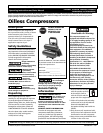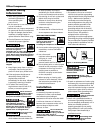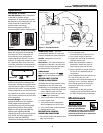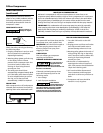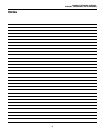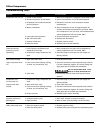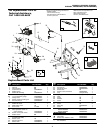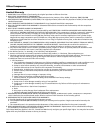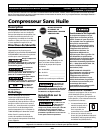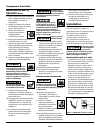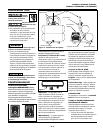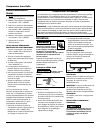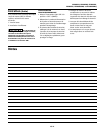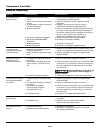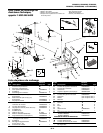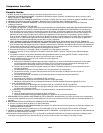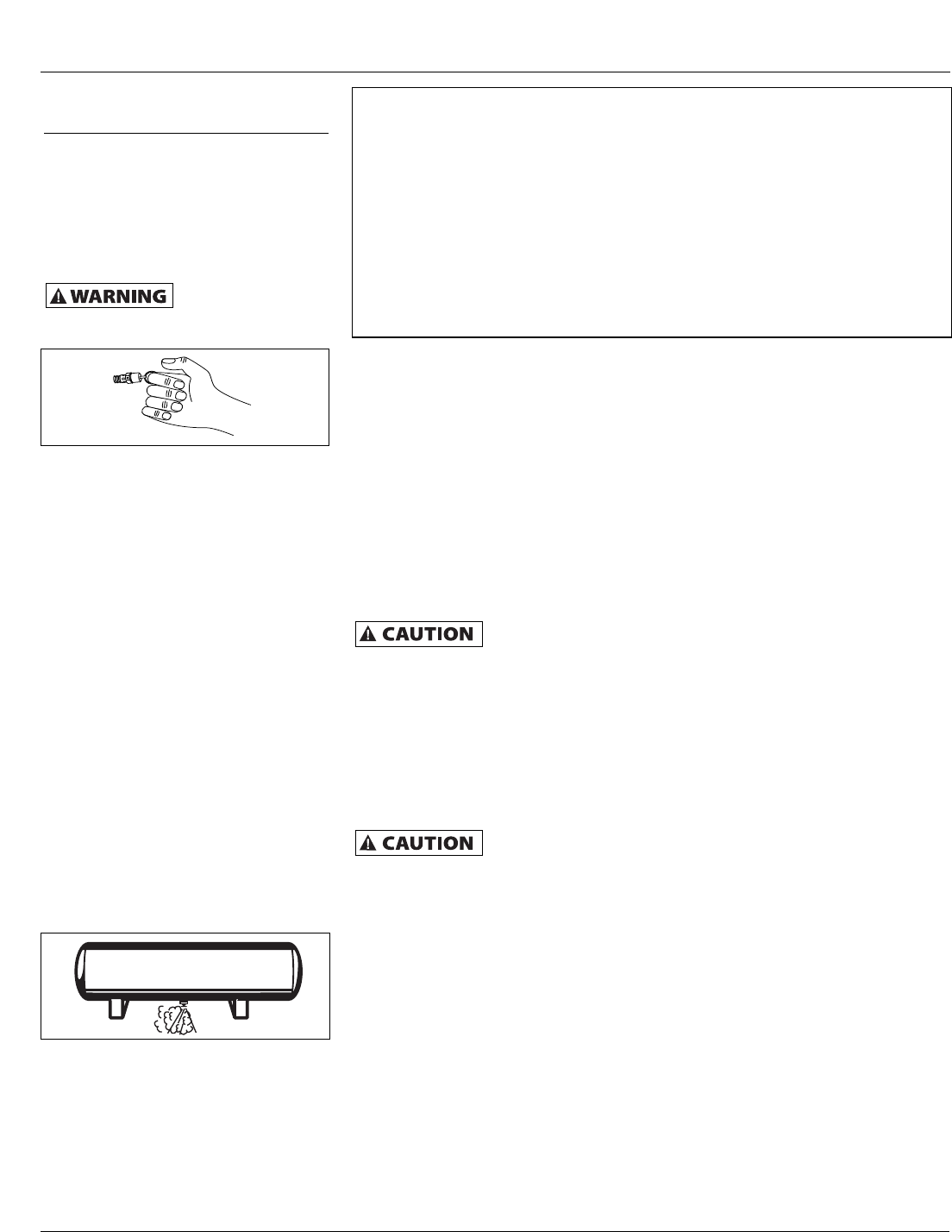
4
The compressor should be checked
often for any visible problems and the
following maintenance procedures
should be performed each time the
compressor is used.
ASME SAFETY VALVE
Do not remove or
attempt to adjust
the safety valve!
Check the safety valve by performing
the following steps:
1. Plug the compressor in and run until
shut off pressure is reached (see
Operating Procedure).
2. Wearing safety glasses, pull the ring
on the safety valve to release
pressure from compressor tank. Use
your other hand to deflect fast-
moving air from being directed
toward your face.
3. The safety valve should close
automatically at approximately 40-50
psi. If the safety valve does not allow
air to be released when you pull on
the ring, or if it does not close
automatically, it MUST be replaced.
DRAIN TANK
With compressor shut off and pressure
released, drain moisture from tank by
opening drain valve underneath tank.
CLEANING
Turn power OFF and clean dust and dirt
from pump cover, tank, and air lines.
IMPORTANT: Unit should be located as
far from spraying area as hose will
allow to prevent over-spray from
clogging air filter.
LUBRICATION
This is an oilless type compressor
requiring no lubrication.
THERMAL OVERLOAD PROTECTOR
This com-pressor is
equipped with an
automatic reset thermal overload
protector which will shut off motor if it
becomes overheated.
If thermal overload protector shuts
motor OFF frequently look for the
following causes:
1. Low voltage
2. Lack of proper ventilation
If the thermal
overload protector is
actuated, the motor must be allowed to
cool down before start-up is possible.
The motor will automatically restart
without warning if left plugged into
electrical outlet and unit is turned on.
END OF OPERATION/STORAGE
1. Turn ON / OFF switch to the OFF
position.
2. Unplug power cord from wall outlet
and wrap around handle area to
prevent damage when not in use.
3. Wearing safety glasses drain tank of
air by pulling the ring on the safety
valve. Use other hand to deflect fast
moving air from being directed
toward your face.
4. Drain tank of condensation by
opening drain valve on bottom of
tank. Tank pressure should be below
10 psi when draining tank.
5. Air hose should be disconnected
from compressor and hung open
ends down to allow any moisture to
drain.
6. Compressor and hose should be
stored in a cool, dry place.
Figure 5
MOISTURE IN COMPRESSED AIR
Moisture in compressed air will form into droplets as it comes from an air
compressor pump. When humidity is high or when a compressor is in continuous
use for an extended period of time, this moisture will collect in the tank. When
using a paint spray or sandblast gun, this water will be carried from the tank
through the hose, and out of the gun as droplets mixed with the spray material.
IMPORTANT: This condensation will cause water spots in a paint job, especially
when spraying other than water based paints. If sandblasting, it will cause the
sand to cake and clog the gun, rendering it ineffective. A filter in the air line
(MP3105), located as near to the gun as possible, will help eliminate this moisture.
Oilless Compressors
Figure 6
Maintenance
(continued)



